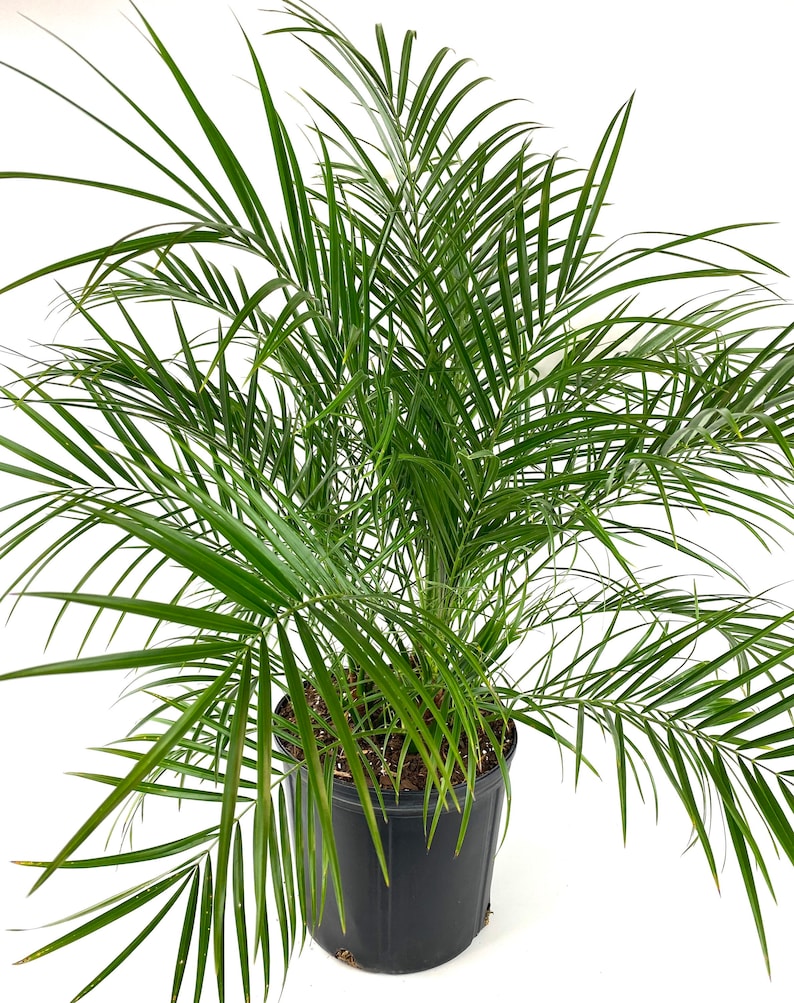If you’d like to cultivate your own palm tree for your garden or even for your home or office, the Pygmy Date Palm is a great choice for a houseplant and is simple to grow in the correct environmental conditions.
This guide will help you get started with caring for and growing this beautiful plant indoors as well as outdoors.
Pygmy Date Palm Overview
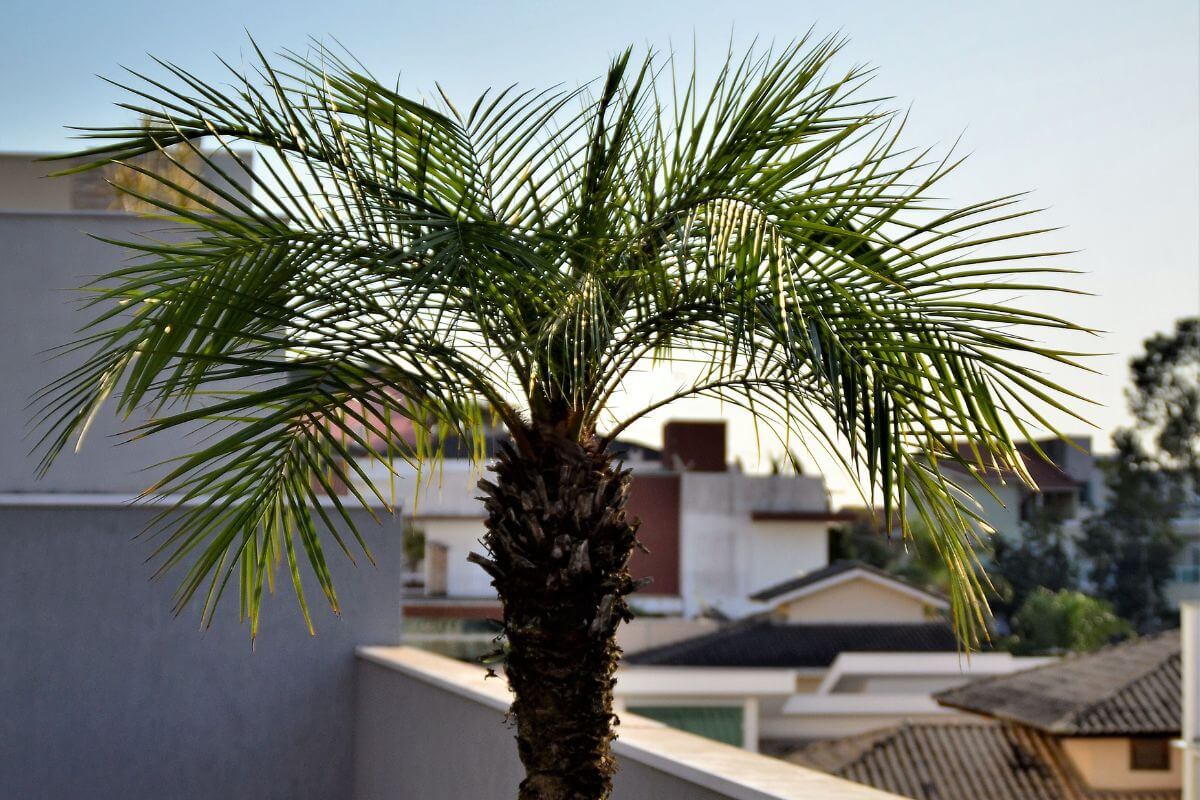
A member of the Arecaceae family, a large family with more than 2600 species, the Phoenix roebeleniiis found in tropical and subtropical climates. It is native to South-East Asia, including China, Laos, and Vietnam.
These palms are among the oldest plants known to be cultivated. Among nursery palms, there are two Phoenix Palm varieties normally available: the Wild Date Palm and the Pygmy Date Palm.
When imagining trees, these palms remain relatively small. A mature pygmy date palm will rarely grow more than six feet tall, and is considered to be a dwarf date palm ideal for subtropical landscapes.
It is small enough to be cultivated in a container, and thanks to its beautiful form and soft foliage texture, it has become increasingly popular as an indoor plant. These palm plants also make for great landscaping palms.
When grown outdoors in a perfect tropical climate, they can grow to as much as 25 feet, although 10 to 12 feet tall is more common.
These palms are usually grown using three seedlings in the same container. As such, they have more than a single trunk that feature beautiful, elegant feathery fronds.
Pygmy Date Palm Varieties
The Phoenix genus is a small group within this family and includes approximately 17 species. There are several varieties of the Phoenix Palms grown. Among these, we find:
- Phoenix roebelenii (Pygmy Date Palm)
- Phoenix reclinate (Wild date palm) used in landscaping with a height of twenty feet
- Phoenix dactylifera (True date palm)
- Phoenix canariensis (Canary Island Date Palm)
- Phoenix sylvestris (Silver Date Palm)
These Phoenix varieties are not typically found as indoor houseplants.
Pygmy Date Palm Care Guide
The only date palm that is suitable for limited indoor cultivation is the pygmy date palm. Larger wild date palms may be seen in large venues, but are not suitable for indoor home environments.
Pygmy Date Palm Foliage: Fronds
These palms naturally produce a canopy made of long feather-like fronds that offer partial shade. Each frond has numerous leaflets, so the tree boasts a shapely, soft appearance.
However, the ends of the leaflets are actually sharp spines, meaning they can potentially puncture the skin.
Nonetheless, this palm is elegant and flowing, unlike other palms that have stiff fronds. For vibrant green fronds, add a bit of magnesium sulfate every several months.
Pygmy Date Palm Trunk
The pygmy’s trunk is slender but will feature protuberances along its entire span. These develop where fronds once grew, but matured and fell off.
While it’s a single trunk palm, because they are planted in clusters, they will develop the appearance of a multi-trunk palm which is often curved in shape.
Pygmy Date Palm Blooms and Fruit
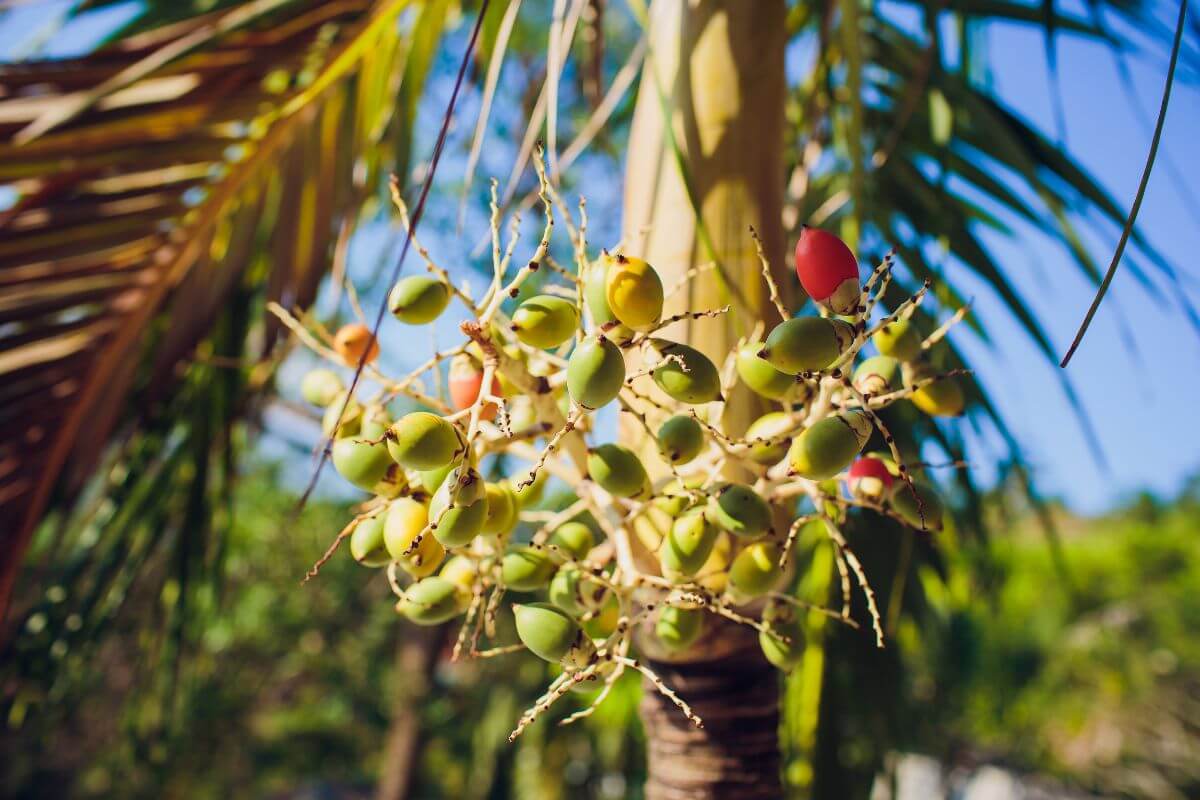
Cream-tinted clusters of flowers grow from the center of the palm’s canopy in the spring. The blooms are followed by a red fruit, that will darken as it matures.
The pygmy is related to palms that produce edible dates, but it is not usually cultivated for the fruit. It features a date pit that has a very thin edible skin that is not worth cultivating for eating purposes.
It also may take upwards of five years for any fruit, or blooms to develop and is not cultivated for agricultural purposes but for decorative reasons as an ornamental.
Environmental Conditions for the Pygmy Date Palm
While the pygmy date palm can be kept inside during the winter if there is sufficient space, it is really not a good tree to grow indoors all year round.
For a mature palm, you will need a container that has at least a 25-gallon capacity. If your palm is young, a 15-gallon may suffice for the first few years.
If you are beginning with a young specimen indoors, use a soilless potting mix, and avoid fertilizing as long as it is indoors.
Soil for the Pygmy Date Palm
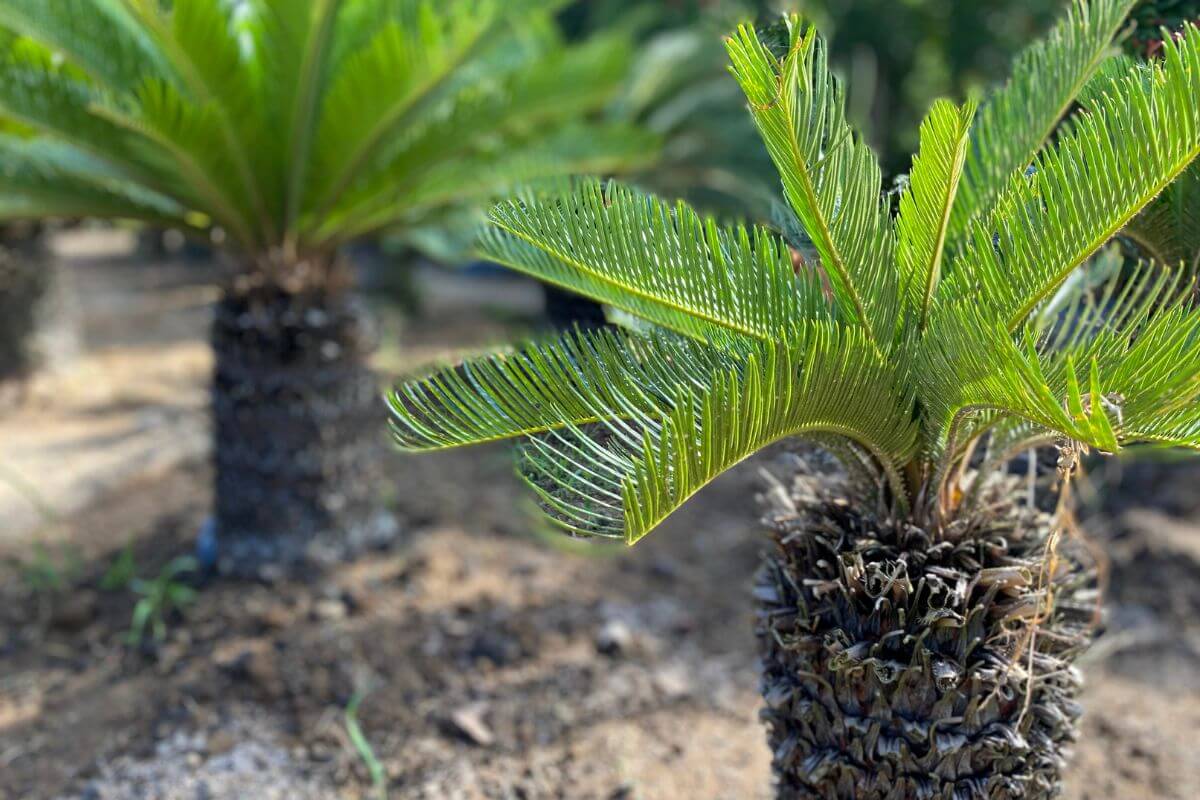
A soil bed that is peat-based is ideal because it allows for great drainage. Soggy soil and water-logged roots are to be avoided. While they are not fussy about the soil type, they are fussy about drainage because a damp soil bed is a necessity.
Check the dryness in the top couple inches of soil regularly. If the soil layer is dry, be sure to give it some water.
Temperature for the Pygmy Date Palm
As a semi-tropical plant, the pygmy date palm enjoys heat and will thrive in temperatures ranging from 65° to 75° Fahrenheit. It can tolerate a very light frost, but freezing temps are fatal.
These palms do well outside in USDA zones 10 and 11.
Light for the Pygmy Date Palm
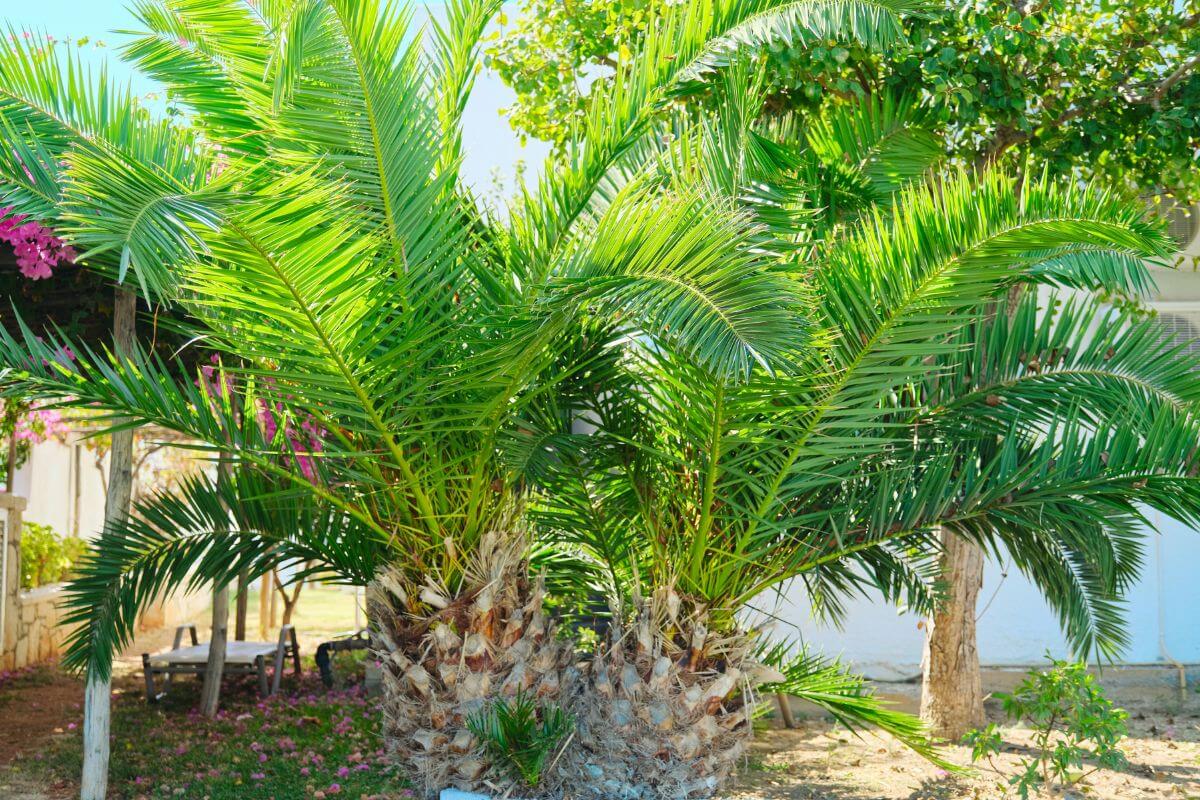
The pygmy date palm will appreciate very bright light, including exposure to full sunlight if possible. Bright light will also help your pygmy date palm to avoid stretching.
Water and Humidity for the Pygmy Date Palm
The pygmy date palm needs water on a regular schedule. The soil bed should always be slightly moist, so a layer of mulch placed over the root zone is a good idea.
As this palm is common to arid climate regions, it is relatively drought tolerant. A weekly watering should be adequate. Too much watering can cause root rot and fungal disease.
The pygmy date palm enjoys a bit of humidity, so humidity levels of approximately 50% will contribute to its overall well-being. Misting occasionally, especially if humidity levels drop, will help when indoors.
Fertilizer for the Pygmy Date Palm
Not a big eater, you can feed the pygmy palm tree once or twice during its growing season with a commercial palm fertilizer.
Follow the indications to know when the palm is suffering from deficiencies in magnesium, manganese, and potassium. In this case, leaves will yellow and begin to decline. These nutrients can be given as supplements every several months.
The most common deficiency is potassium. As most palm fertilizers will be categorized as 8-2-12 or 8-0-12, the 12 indicates potassium, which is a must for cultivating palms.
Pruning and Repotting the Pygmy Date Palm
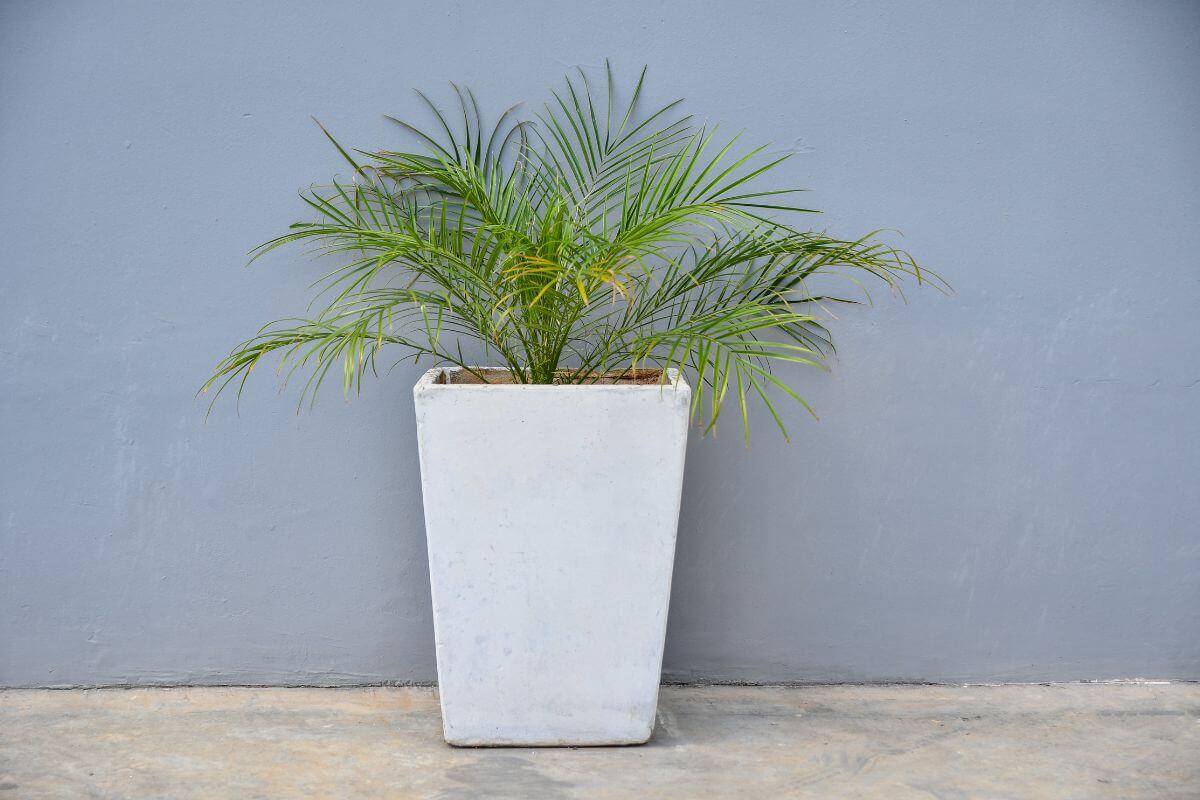
Very little pruning is required for a pygmy date palm. Simply remove any brown fronds and trim away the lower fronds as they droop and begin to change color.
Date palms do very well in containers when they are slightly root-bound, so you can plan on repotting your pygmy date palm every second year.
The palm’s container may break as the plant grows and expands. When repotting, wear gardening gloves and beware of the spines.
Propagating the Pygmy Date Palm
Pygmy date palms are propagated from seed, so you probably won’t be propagating them. If you do have access to healthy date seed, it will use what is known as “remote germination” to propagate.
When you plant the date seed, the plant seedling will emerge from the soil bed at a distance from where you initially planted the seed. Several weeks will be needed for germination.
Pygmy date palms can be propagated through offshoots that sprout from the trunk, they will need to be trimmed away from the parent palm with the root ball attached and then repotted.
Pygmy Date Palm Common Plant Pests, Diseases, and Problems
Pygmy date palms are susceptible to typical indoor houseplant pests such as aphids, mealybugs, mites, scale insects, and whiteflies.
If you notice an infestation, treat your palm as soon as possible with an organic insecticide. To help remove pests, spray and rinse the fronds regularly.
Ganoderma butt rot, a fungal disease born within the soil bed, is the most common threat to the pygmy date palm. It will rot at the base of the palm trunk.
Unfortunately, infected palms should be destroyed because there is no cure. Care should be taken if you have more than one palm because this disease is highly contagious.
This palm is also at risk for Pestalotiopsis leaf spot if exposed to temperatures below 50°F for extended periods of time. This infection can be treated with a fungicide.
Pygmy Date Palm Toxicity and Pets
The pygmy date palm is non-toxic to dogs and cats.
Pygmy Date Palm Tree Care Final Thoughts
The pygmy date palm is a manageable palm for indoor gardening when considering size. It will look lovely if planted directly in your yard.
Even when cultivating it in a container indoors, give it some time outdoors in warm temperatures and then move it back inside for the winter.
For more guides on caring for palms:
Pygmy Date Palm Care FAQs
Can pygmy date palms take full sun?
Yes, the pygmy date palm can grow in direct sunlight without problems. However, keep in mind that these plants require high humidity levels during their growth cycle. Be sure to give it plenty of water, so the soil stays moist.
How big do pygmy date palms get?
Pygmy date palms can grow as tall as 12 feet or even taller depending upon how much light they receive. They usually reach about 5–6 feet when mature, but in the perfect outdoor, tropical climate, it can grow up to 12 feet taller.
Is a pygmy date palm poisonous?
No, the pygmy date palm tree is not toxic. The leaves contain saponins which make it mildly irritating to humans. You shouldn’t worry too much about touching the foliage unless you’re allergic to latex.
Do pygmy palms need a lot of water?
Yes, pygmy palms need regular watering throughout its life span. Watering needs vary based on temperature and amount of sunshine received by the plant. In general, you’ll want to provide enough moisture to ensure good drainage around the roots. Keep in mind that the soil must stay damp all year round. Pygmy dates don’t like dry conditions.
Are used coffee grounds good for palm trees?
Yes, used coffee grounds are good for palm trees. Coffee grounds act as fertilizer and add nutrients to the soil. They will add nutrients and minerals like potassium, magnesium, calcium, iron, phosphorous, and nitrogen to the soil. These elements promote healthy root development and overall health of the plant.

